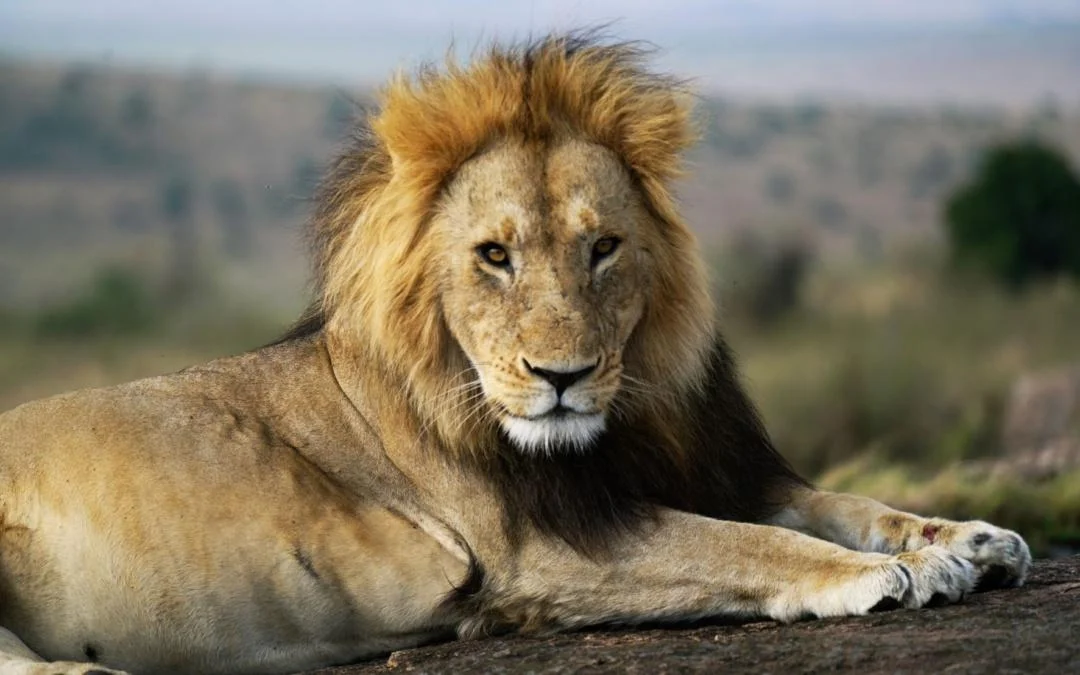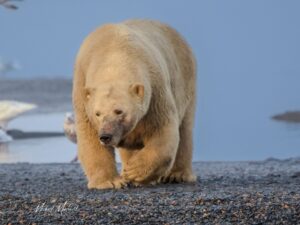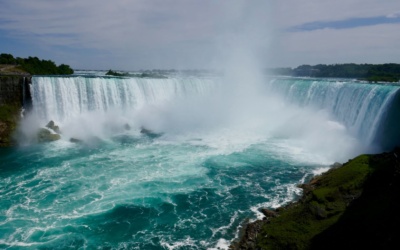Kati and I are committed to wildlife preservation and conservation. We have seen first-hand the devastation in many areas that man has caused. Traveling to India, Africa and the Arctic we have witnessed the struggle that wildlife faces daily just to survive due to habitat loss, poaching, and climate change. However, amidst these challenges, there are remarkable initiatives and organizations that have dedicated themselves to protecting and conserving wildlife. In this article, we will celebrate five exemplary wildlife preservation efforts that are making a significant difference in safeguarding our planet’s biodiversity.
The Serengeti Lion Project: A Remarkable Initiative Protecting Africa’s Iconic Predators
The Serengeti Lion Project is a groundbreaking initiative that focuses on the conservation of Africa’s iconic predators, the lions. Led by Dr. Craig Packer, this project has been instrumental in understanding the behavior, ecology, and conservation needs of lions in the Serengeti ecosystem. Through extensive research and community engagement, the project has successfully raised awareness about the importance of lion conservation and implemented effective strategies to mitigate human-wildlife conflicts.
One of the key achievements of the Serengeti Lion Project is the establishment of Lion Guardians, a program that empowers local Maasai warriors to protect lions and their habitats. These warriors, who were once lion hunters, now work as conservation ambassadors, monitoring lion movements, preventing conflicts with local communities, and promoting coexistence between humans and wildlife. This innovative approach has not only reduced lion killings but has also transformed the perception of lions within the Maasai community.
Saving the Amazon: The Yasuni-ITT Initiative’s Battle Against Deforestation
I have traveled to the Amazon and have seen what happens due to deforestation. The Amazon rainforest, often referred to as the “lungs of the Earth,” is under constant threat from deforestation. However, the Yasuni-ITT Initiative in Ecuador has emerged as a beacon of hope in the fight against deforestation. The initiative aims to protect the Yasuni National Park, one of the most biodiverse areas in the world, by keeping its oil reserves underground in exchange for international contributions.
By preserving the rainforest, the Yasuni-ITT Initiative not only safeguards the habitat of countless species but also mitigates climate change by preventing the release of carbon dioxide from deforestation and oil extraction. This innovative approach has garnered international support, with countries and organizations pledging financial contributions to the initiative. However, the success of the Yasuni-ITT Initiative relies on continued global commitment to ensure the long-term preservation of this invaluable ecosystem.
Reviving the Giants: The Successful Efforts to Save the Endangered Asian Elephant
All elephants are magnificent and experiencing them in the wild is truly breathtaking. The Asian elephant, an iconic and culturally significant species, is facing numerous threats, including habitat loss, poaching, and human-elephant conflicts. However, several organizations and initiatives have been working tirelessly to protect and revive the population of these majestic creatures.
One such initiative is the Asian Elephant Conservation Project, which focuses on conserving elephant habitats, mitigating human-elephant conflicts, and raising awareness about the importance of elephant conservation. Through community engagement and education programs, the project has successfully reduced conflicts between elephants and local communities, leading to a decline in retaliatory killings.
Additionally, the Elephant Family, a UK-based organization, has been instrumental in supporting various conservation projects across Asia. Their efforts include establishing protected areas, implementing anti-poaching measures, and promoting sustainable livelihoods for local communities. These initiatives have not only helped revive the Asian elephant population but have also contributed to the overall conservation of biodiversity in the region.
Coral Reefs in Crisis: The Great Barrier Reef Foundation’s Fight for Marine Biodiversity
Coral reefs, often referred to as the “rainforests of the sea,” are facing unprecedented threats due to climate change, pollution, and overfishing. The Great Barrier Reef Foundation, an Australian non-profit organization, has been at the forefront of efforts to protect and restore the Great Barrier Reef, the largest coral reef ecosystem in the world.
Through research, conservation projects, and partnerships with scientists, the Great Barrier Reef Foundation has been working tirelessly to address the challenges facing the reef. Their initiatives include coral restoration programs, water quality improvement projects, and the development of innovative technologies to monitor and protect the reef.
However, the Great Barrier Reef Foundation’s work goes beyond conservation efforts. They also focus on raising awareness about the importance of coral reefs and engaging the public in citizen science initiatives. By involving the community in reef monitoring and restoration activities, the foundation fosters a sense of ownership and responsibility towards the preservation of this invaluable ecosystem.
Protecting Pristine Landscapes: The Yellowstone to Yukon Conservation Initiative’s Transboundary Efforts
The Yellowstone to Yukon Conservation Initiative (Y2Y) is a visionary project that aims to protect and restore the interconnected ecosystems spanning from Yellowstone National Park in the United States to the Yukon in Canada. This transboundary effort recognizes the importance of preserving large, intact landscapes to ensure the long-term survival of wildlife species.
Y2Y focuses on various conservation strategies, including land acquisition, habitat restoration, and wildlife corridor protection. By establishing protected areas and promoting connectivity between different habitats, Y2Y enables wildlife to move freely across vast landscapes, ensuring genetic diversity and resilience in the face of climate change.
The success of Y2Y lies in its collaborative approach, bringing together governments, Indigenous communities, conservation organizations, and local stakeholders. This inclusive model has not only resulted in the preservation of pristine landscapes but has also fostered sustainable development and economic opportunities for local communities.
Community-led Conservation: The Success Story of Namibia’s Conservancies
Namibia, a country in southwestern Africa, has become a global leader in community-led conservation through its conservancy program. This innovative approach empowers local communities to manage and benefit from wildlife and natural resources, creating incentives for conservation and sustainable development.
Under the conservancy program, communities form conservancies and gain rights over wildlife management and tourism activities. By actively participating in conservation efforts, communities have a vested interest in protecting wildlife and their habitats. This approach has led to a significant increase in wildlife populations, including endangered species such as black rhinos and cheetahs.
Moreover, conservancies have created economic opportunities for local communities through wildlife-based tourism, trophy hunting, and sustainable natural resource management. These initiatives not only alleviate poverty but also promote the long-term viability of conservation efforts by ensuring the economic benefits of wildlife preservation are shared with local communities.
Our Final Word: Inspiring Change and Hope for the Future of Wildlife Preservation
The exemplary wildlife preservation efforts highlighted in this article demonstrate the power of dedicated individuals, organizations, and communities in making a difference in the conservation of our planet’s biodiversity. From protecting iconic predators in the Serengeti to reviving endangered species like the Asian elephant, these initiatives showcase the importance of research, community engagement, and innovative approaches in safeguarding wildlife.
Furthermore, the success stories of the Yasuni-ITT Initiative, the Great Barrier Reef Foundation, and the Yellowstone to Yukon Conservation Initiative highlight the significance of international collaboration and the need for global commitment to address the challenges facing our ecosystems.
Lastly, the community-led conservation model in Namibia’s conservancies serves as an inspiring example of how empowering local communities can lead to successful wildlife preservation and sustainable development.
As we celebrate these conservation champions, it is crucial to recognize that the fight to protect wildlife is far from over. Continued support, awareness, and action are essential to ensure a future where wildlife thrives and biodiversity is preserved for generations to come. By learning from these exemplary efforts and implementing similar strategies worldwide, we can inspire change and create a hopeful future for wildlife preservation.
Related Posts
The Top 7 Most Beautiful Waterfalls in the World
From the thundering Niagara Falls to the majestic Iguazu Falls, the world’s most spectacular waterfalls are a sight to behold. This guide will take you on a journey to explore the top 7 waterfalls, from the highest to the widest, and provide you with all the information you need to plan your own unforgettable adventure. From the breathtaking Victoria Falls to the powerful Angel Falls, you’ll be mesmerized by the sheer power and beauty of these natural wonders.
Casablanca Calling: 5 Unforgettable Things to Do in Morocco’s Modern Metropolis
Casablanca is a city of wonders, full of captivating sights and experiences. From the bustling markets of the Old Medina to the stunning Hassan II Mosque, there is something for everyone. Explore the city’s vibrant culture and history with a visit to the Museum of Moroccan Judaism or take a stroll along the Corniche to admire the stunning views of the Atlantic Ocean. With its unique blend of culture, cuisine, and architecture, Casablanca is a must-see destination.
How to travel in Egypt like a Local
Egypt is a country of ancient wonders, vibrant culture, and stunning landscapes. With its rich history and diverse culture, it’s no wonder that Egypt is one of the most popular tourist destinations in the world. But if you want to experience Egypt like a local, there are some insider tips you should know. Here are some tips for traveling in Egypt like a local.











0 Comments